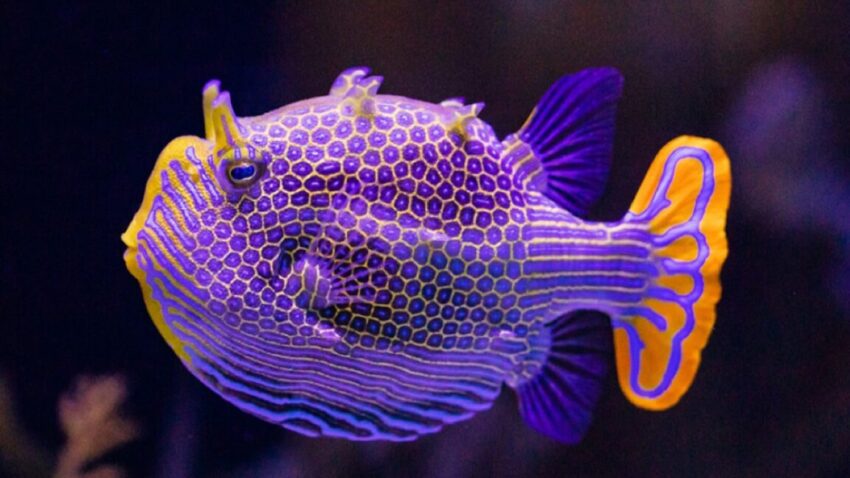
why imperfection could be key to turing A recent study reveals that introducing imperfections into a model can enhance the accuracy of Turing patterns, which are prevalent in nature.
why imperfection could be key to turing
Understanding Turing Patterns
Turing patterns, named after the renowned mathematician and computer scientist Alan Turing, are complex, spatially organized structures that arise in biological systems. These patterns can be observed in various forms, such as the striking black-and-white stripes of a zebra or the intricate spots of a leopard. Turing’s original hypothesis, presented in his groundbreaking 1952 paper, proposed a theoretical framework for understanding how such patterns emerge through the interaction of specific chemicals in biological systems.
The Mechanism Behind Turing Patterns
In his seminal work, Turing introduced the concept of morphogens—substances that govern the patterning of tissues in developing organisms. He proposed a mechanism involving two types of chemicals: an activator and an inhibitor. The activator promotes the expression of a particular trait, while the inhibitor suppresses it. Both chemicals diffuse through the system, much like gas molecules in a container. This diffusion process is crucial for the formation of patterns.
To illustrate this, consider the analogy of adding a drop of black ink to a beaker of water. Initially, the ink spreads out, creating a uniform gray color. However, if the inhibitor diffuses more rapidly than the activator, it disrupts the stabilization process, leading to the emergence of distinct patterns such as spots or stripes. This interplay between the activator and inhibitor is fundamental to the formation of Turing patterns.
Limitations of Turing’s Original Model
Despite the elegance of Turing’s model, it has limitations. The original framework was too simplistic to accurately reproduce the complexity of patterns observed in nature. Researchers have since attempted to apply Turing’s principles to various biological systems, but many of these efforts have fallen short of capturing the intricacies of natural patterns.
For example, while Turing mechanisms have been identified in various biological contexts—such as the stripes of zebrafish, the arrangement of hair follicles in mice, and the formation of feather buds on birds—scientists have struggled to replicate these patterns in laboratory settings. The challenge lies in the fact that real-world biological systems are influenced by numerous factors, including environmental conditions, genetic variations, and cellular interactions, which Turing’s original model did not account for.
A New Approach from the University of Colorado Boulder
In light of these limitations, a team of researchers at the University of Colorado Boulder (UCB) has developed a novel modeling approach that addresses the shortcomings of Turing’s original framework. Their findings, published in the journal Matter, suggest that incorporating deliberate imperfections into the model can lead to more accurate representations of Turing patterns.
Introducing Imperfections
The UCB researchers discovered that by intentionally introducing imperfections into their model, they could achieve a greater degree of accuracy in simulating Turing patterns. This approach contrasts with traditional modeling techniques, which often strive for idealized conditions and uniformity. By embracing imperfections, the researchers were able to capture the chaotic and dynamic nature of biological systems more effectively.
One of the key insights from their research is that imperfections can serve as catalysts for pattern formation. In the context of their study, the researchers used a mixture of two types of pigment-producing cells that underwent diffusiophoretic transport—a process where particles move in response to concentration gradients of solutes. This method allowed the cells to self-assemble into a hexagonal pattern, demonstrating how imperfections can facilitate the emergence of complex structures.
Implications for Biological Research
The implications of this research extend beyond the realm of theoretical modeling. By providing a more accurate framework for understanding Turing patterns, the UCB team’s findings could have significant ramifications for various fields of biological research. For instance, a deeper understanding of pattern formation could enhance our knowledge of developmental biology, tissue engineering, and regenerative medicine.
In developmental biology, researchers could leverage this new modeling approach to gain insights into how organisms develop and pattern their tissues during embryonic development. By understanding the mechanisms that govern pattern formation, scientists may be able to identify the underlying causes of developmental disorders and congenital anomalies.
Applications in Regenerative Medicine
In the field of regenerative medicine, the ability to manipulate Turing patterns could pave the way for innovative therapies. For example, if researchers can better understand how to induce specific patterns in tissue regeneration, they may be able to develop strategies for repairing damaged organs or tissues. This could have profound implications for treating conditions such as heart disease, spinal cord injuries, and skin wounds.
Broader Context: The Role of Patterns in Nature
Patterns are ubiquitous in nature, serving essential functions in various biological processes. From the arrangement of leaves on a stem to the distribution of seeds in a fruit, patterns play a crucial role in optimizing resource allocation and enhancing survival. Understanding how these patterns form and evolve is fundamental to unraveling the complexities of life.
Moreover, Turing patterns are not limited to biological systems. They can also be observed in physical and chemical processes, such as the formation of sand dunes, the patterns of waves on a beach, and even in the behavior of certain animal populations. By studying Turing patterns across different domains, researchers can gain insights into the underlying principles that govern complex systems.
Future Directions in Research
The UCB team’s findings open up new avenues for research in the field of pattern formation. Future studies could explore the role of additional factors, such as environmental influences and genetic variations, in shaping Turing patterns. Researchers may also investigate how these patterns evolve over time and how they respond to changes in external conditions.
Furthermore, interdisciplinary collaborations between mathematicians, biologists, and physicists could lead to a more comprehensive understanding of Turing patterns. By integrating insights from different fields, scientists can develop more robust models that account for the complexities of real-world systems.
Conclusion
The recent research from the University of Colorado Boulder highlights the importance of embracing imperfections in modeling Turing patterns. By doing so, researchers can achieve a more accurate representation of the complex patterns observed in nature. This innovative approach not only enhances our understanding of biological systems but also has the potential to inform advancements in developmental biology and regenerative medicine. As scientists continue to explore the intricacies of pattern formation, the implications of this research will likely extend far beyond the confines of theoretical modeling, shaping the future of biological research and applications.
Source: Original report
Was this helpful?
Last Modified: October 27, 2025 at 11:36 pm
1 views















